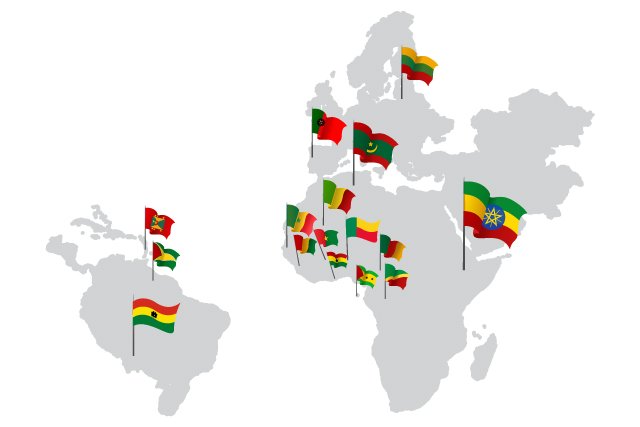
Flags are not just colorful pieces of cloth; they are powerful symbols that communicate the essence of a nation’s history, values, and aspirations. In this blog post, we explore the symbolism, flag descriptions, meanings, and times of adoption for the red, yellow, and green flags of the following countries:
Red, Yellow, and Green Flags – Symbolism and Meaning
Embarking on a journey into the heart of flag symbolism, we discover that the colors red, yellow, and green transcend mere visual elements. These hues are profound conveyors of history, culture, and collective identity, weaving captivating stories into the very fabric of nations. Let’s delve into the nuanced significance behind each color, unraveling the tales embedded in the national emblems adorned with red, yellow, and green. Also, Discover our comprehensive guide to countries featuring flags in black, red, and yellow.
Red: Standing as a beacon of fervor symbolizes the passion coursing through the veins of nations. It echoes the sacrifices made in the pursuit of independence and pulsates with the energy of revolutions. Red is a vivid reminder of resilience and determination, representing the blood shed on the arduous path to freedom.
Yellow: Radiating a symbolism of wealth and hope represents the prosperity and optimism that nations hold dear. It embodies the sun’s brilliance, casting a warm glow on people’s aspirations. Yellow stands as a visual testament to the abundant resources and the promising future envisioned by the nation.
Green: A serene and enduring hue symbolizes stability, loyalty, and the enduring perseverance of a nation. Inspired by the vastness of nature, green mirrors the inclusive embrace of diverse cultures. It reflects the steadfast commitment to foundational principles and represents unbreakable bonds tying individuals to their communities.
Red, Yellow, and Green Together in Flags
When red, yellow, and green unite on a flag, they create a harmonious tapestry representing unity, shared values, and the unique identity of a nation. This combination often signifies a nation’s commitment to democracy, freedom, and the pursuit of a better future. The interconnectedness of these colors fosters a sense of national pride, evoking a collective spirit that transcends individual differences.
Flags adorned with red, yellow, and green become vibrant declarations of identity, resilience, and the enduring pursuit of ideals. These colors serve as a visual anthem, echoing the nation’s journey, struggles, and unwavering commitment to the principles they represent. The tapestry of red, yellow, and green embodies the rich history and aspirations of each nation, creating a visual narrative that speaks to the heart of its people.
Flags of Red, Yellow, and Green
Now, let’s explore several countries that incorporate the colors blue, yellow, and red into their public flags, showcasing the different interpretations of these colors.
1. Benin
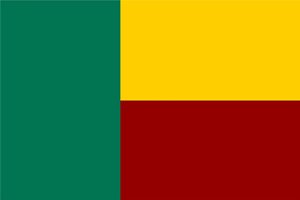
- Flag Description: Vertical stripes of green, yellow, and red with a star in the upper left corner.
- Meaning: Green signifies hope, yellow represents wealth, and red symbolizes courage and determination. The star embodies the unity of the country.
- Time of Adoption: Officially adopted on November 16, 1959.
2. Portugal

- Flag Description: Vertical bands of green and red with a shield in the center.
- Meaning: Green represents hope, red symbolizes the struggle for independence, and the shield features national emblems and historical elements.
- Time of Adoption: Officially adopted on June 30, 1911.
3. Lithuania

- Flag Description: Horizontal bands of yellow, green, and red.
- Meaning: Yellow stands for the sun, green for the land, red for courage, and the blood shed for independence.
- Time of Adoption: Officially adopted on April 25, 1918.
4. Republic of the Congo
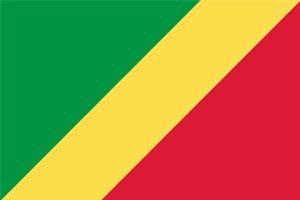
- Flag Description: Diagonal bands of green, yellow, and red with a diagonal stripe of blue and a yellow star.
- Meaning: Green represents the country’s forests, yellow symbolizes the friendship and nobility of the people, and red stands for the sacrifice of fallen heroes.
- Time of Adoption: Officially adopted on August 18, 1958.
5. Guyana

- Flag Description: Horizontal bands of green, yellow, and red with white and black borders.
- Meaning: Green symbolizes agriculture and forests, yellow represents mineral resources, and red signifies the sacrifices of the country’s martyrs.
- Time of Adoption: Officially adopted on May 26, 1966.
6. Bolivia

- Flag Description: Horizontal bands of red, yellow, and green with the national coat of arms in the center.
- Meaning: Red stands for valor and bravery, yellow for the country’s wealth, and green for fertility and hope.
- Time of Adoption: Officially adopted on November 5, 1851.
7. Guinea

- Flag Description: Vertical bands of red, yellow, and green with a yellow star in the center.
- Meaning: Red symbolizes the people’s sacrifice, yellow represents the sun, and green stands for the country’s natural wealth. The star signifies national unity.
- Time of Adoption: Officially adopted on November 10, 1958.
8. Mali

- Flag Description: Vertical bands of green, yellow, and red with the national emblem in the center.
- Meaning: Green symbolizes fertility, yellow represents purity, and red signifies the country’s strength. The emblem features a mosque, a rising sun, and agricultural tools.
- Time of Adoption: Officially adopted on March 1, 1961.
9. Burkina Faso
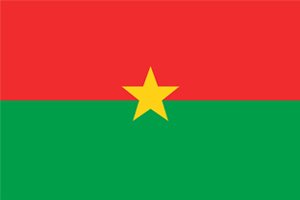
- Flag Description: Horizontal bands of red, green, and yellow with a star in the center.
- Meaning: Red represents the revolution, green symbolizes abundance, and yellow stands for the country’s mineral wealth. The star signifies the guiding light of the revolution.
- Time of Adoption: Officially adopted on August 4, 1984.
10. Sao Tome and Príncipe
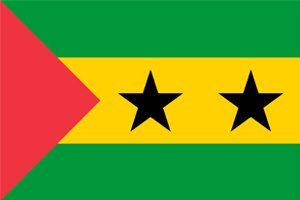
- Flag Description: Horizontal bands of green, yellow, and green with a red triangle and black star.
- Meaning: Green symbolizes the country’s rich vegetation, yellow represents cocoa, and red stands for the struggle for independence. The black star signifies African freedom.
- Time of Adoption: Officially adopted on November 5, 1975.
11. Mauritania
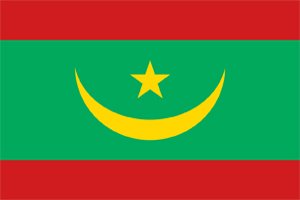
- Flag Description: Vertical bands of green, yellow, and red with a red crescent and star.
- Meaning: Green represents the nation’s verdant pastures, yellow symbolizes the Sahara desert, and red stands for the bloodshed in the country’s struggle for independence. The crescent and star represent Islam.
- Time of Adoption: Officially adopted on April 1, 1959.
12. Senegal

- Flag Description: Vertical bands of green, yellow, and red with a green star in the center.
- Meaning: Green symbolizes hope, yellow represents wealth, and red stands for sacrifice. The star signifies unity.
- Time of Adoption: Officially adopted on August 20, 1960.
13. Grenada
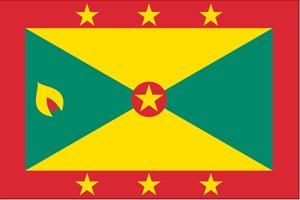
- Flag Description: Diagonal bands of green, yellow, and red with a nutmeg at the center.
- Meaning: Green represents agriculture, yellow symbolizes the sun, and red stands for courage and vitality. The nutmeg signifies the country’s economic mainstay.
- Time of Adoption: Officially adopted on February 7, 1974.
14. Ghana
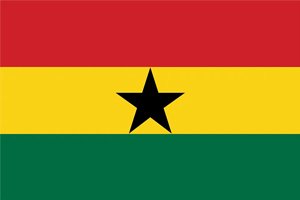
- Flag Description: Horizontal bands of red, yellow, and green with a black five-pointed star in the center.
- Meaning: Red represents the bloodshed for independence, yellow symbolizes the country’s mineral wealth, and green stands for the rich vegetation. The black star represents African freedom.
- Time of Adoption: Officially adopted on March 6, 1957.
15. Ethiopia

- Flag Description: Horizontal bands of green, yellow, and red with the national emblem in the center.
- Meaning: Green symbolizes the land, yellow represents hope, and red stands for sacrifice and valor. The emblem features a yellow pentagram.
- Time of Adoption: Officially adopted on August 28, 1996.
16. Cameroon

- Flag Description: Vertical bands of green, red, and yellow with a yellow star in the center.
- Meaning: Green symbolizes forests, red represents unity, and yellow stands for the country’s sun. The star signifies the unity of the people.
- Time of Adoption: Officially adopted on May 20, 1975.
Read More: Countries With Red, White And Blue Flags
Conclusion
In conclusion, the red, yellow, and green flags of these diverse countries tell stories of resilience, unity, and the rich tapestry of their unique histories. Each flag, with its distinct combination of colors and symbols, is a testament to the cultural, historical, and aspirational identity of the nation it represents. Also, Discover our comprehensive guide to nations featuring flags Red and White.








